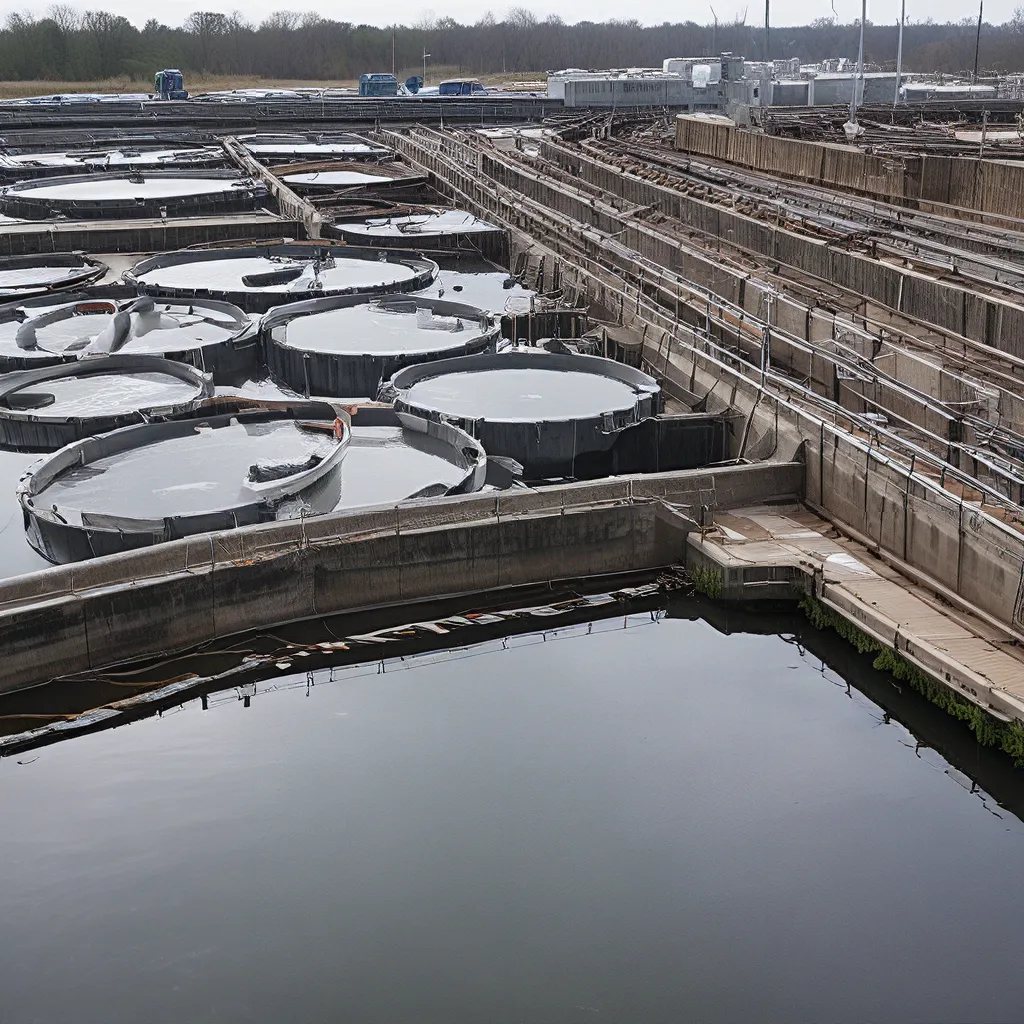
As a wastewater treatment professional, I’ve seen firsthand the growing challenge of dealing with emerging contaminants in our water systems. These are substances that have been around for a while, but have only recently become a major concern due to advancements in detection and a greater understanding of their potential impacts. And let me tell you, it’s no easy task keeping up with these ever-evolving threats to our water quality.
One of the biggest culprits in this arena is PFAS – that’s short for per- and polyfluoroalkyl substances. These chemicals have been used in all sorts of products, from firefighting foams to food packaging, and they have a nasty habit of sticking around in the environment long after we’ve disposed of them. In fact, the White House recently announced a comprehensive plan to combat PFAS pollution, recognizing the urgent need to address this growing problem.
It’s not just PFAS, though. There’s a whole host of other emerging contaminants that are keeping wastewater treatment operators like myself up at night. Things like pharmaceuticals, personal care products, and even microplastics are starting to show up in our water supplies, and their long-term effects are still largely unknown. It’s a veritable minefield of potential hazards that we have to navigate.
But you know what they say – where there’s a challenge, there’s an opportunity. And in the world of wastewater treatment, we’re rising to the occasion. We’re developing advanced removal strategies that are designed to tackle these emerging contaminants head-on. From cutting-edge treatment technologies to innovative monitoring and detection methods, we’re leaving no stone unturned in our quest for cleaner, safer water.
Take ozone treatment, for example. This process uses highly reactive ozone molecules to break down and remove a wide range of organic pollutants, including many of the pesky emerging contaminants. It’s a process that’s been around for a while, but recent advancements have made it more efficient and cost-effective. And the best part? It doesn’t leave behind any harmful byproducts, unlike some of the more traditional treatment methods.
Another promising approach is the use of activated carbon filtration. This method harnesses the power of porous carbon materials to adsorb and remove a variety of organic and inorganic contaminants from the water. It’s particularly effective at tackling pharmaceuticals and personal care products, which can be notoriously difficult to remove using conventional treatment methods.
But the real game-changer, in my opinion, is the emergence of membrane filtration technologies. These systems use semi-permeable membranes to physically separate contaminants from the water, and they can be tailored to target specific types of pollutants. Whether it’s nanofiltration for removing dissolved organic matter or reverse osmosis for tackling salts and minerals, these membrane-based solutions are proving to be incredibly versatile and effective.
And let’s not forget about the importance of monitoring and detection. After all, you can’t treat what you can’t see. That’s why we’re investing heavily in advanced analytical techniques like high-resolution mass spectrometry to identify and quantify even the most elusive emerging contaminants. This data is crucial for understanding the scope of the problem and developing targeted removal strategies.
But the real key to success in this arena is collaboration. Researchers, regulatory agencies, and water utilities are all working together to tackle this challenge head-on. We’re sharing data, exchanging best practices, and pushing the boundaries of what’s possible in wastewater treatment. And you know what? I’m really excited to see what the future holds.
Because at the end of the day, this isn’t just about keeping our water clean – it’s about safeguarding the health and wellbeing of our communities. When you think about it that way, the stakes couldn’t be higher. But with the incredible advances we’re seeing in wastewater treatment technology, I’m confident that we can rise to the occasion and deliver the clean, safe water that our communities deserve.
So, if you’re curious to learn more about how we’re tackling emerging contaminants, I’d encourage you to check out the resources on the Alpha Wastewater Services website. There, you’ll find a wealth of information on the latest removal strategies, treatment technologies, and regulatory developments in this rapidly evolving field. And who knows, maybe you’ll even get inspired to join us in this important work. After all, clean water is something we can all get excited about.